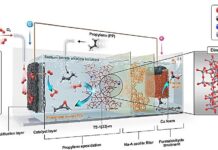A new species of rhino, Epiaceratherium itjilik, has been discovered in the Canadian High Arctic, providing significant new information about the evolution and dispersal of these large mammals. Fossilized remains of the rhino, which lived approximately 23 million years ago during the Early Miocene epoch, were found in the Haughton Crater on Devon Island, Nunavut, and its discovery is challenging long-held assumptions about the North Atlantic’s role in shaping rhino evolution.
A Previously Unimagined Arctic Rhino
Epiaceratherium itjilik is a relatively recent addition to the rhino family tree, closely related to other species that thrived in Europe millions of years earlier. The rhino was of a moderate size, comparable to the modern Indian rhinoceros, but notably lacked a horn. Researchers have been astonished by the condition of the discovered remains, with over 75% of the skeleton remarkably well-preserved, allowing for a detailed analysis of the animal’s anatomy.
The Significance of a Remarkably Complete Fossil
The researchers’ analysis involved comparing Epiaceratherium itjilik to 57 other species of rhinocerotids, almost all now extinct. This comparative study, drawing on museum collections, scientific literature, and extensive databases, allowed them to place the newly discovered species within the larger evolutionary context of the Rhinocerotidae family. Crucially, each species was geographically mapped, leading to a mathematical modeling approach to understand the rates of dispersal between different continents.
Reassessing the North Atlantic Land Bridge
The most compelling finding of this research is its impact on our understanding of how rhinos migrated between North America and Europe. Previous theories suggested that the North Atlantic Land Bridge — a now-submerged land connection between the continents — ceased to function as a dispersal corridor around 56 million years ago. Epiaceratherium itjilik and its related species, however, strongly suggest that rhinos continued to move between Europe and North America much later, potentially as recently as the Miocene epoch.
“It’s always exciting and informative to describe a new species,” stated Dr. Danielle Fraser, a researcher involved in the study. “But there is more that comes from the identification of Epiaceratherium itjilik, as our reconstructions of rhino evolution show that the North Atlantic played a much more important role in their evolution than previously thought.”
An Arctic Treasure Trove
The discovery underscores the Arctic’s continued potential for revealing new knowledge and discoveries. The researchers’ findings, published in the journal Nature Ecology & Evolution, highlight how further investigation of Arctic fossil sites could significantly broaden our understanding of mammal diversification across time. This discovery prompts a reassessment of established dispersal routes and demonstrates that the Arctic—a seemingly harsh environment—was once a crucial pathway for mammalian evolution.
The Arctic continues to offer up new knowledge and discoveries that expand on our understanding of mammal diversification over time. — Dr. Danielle Fraser
































